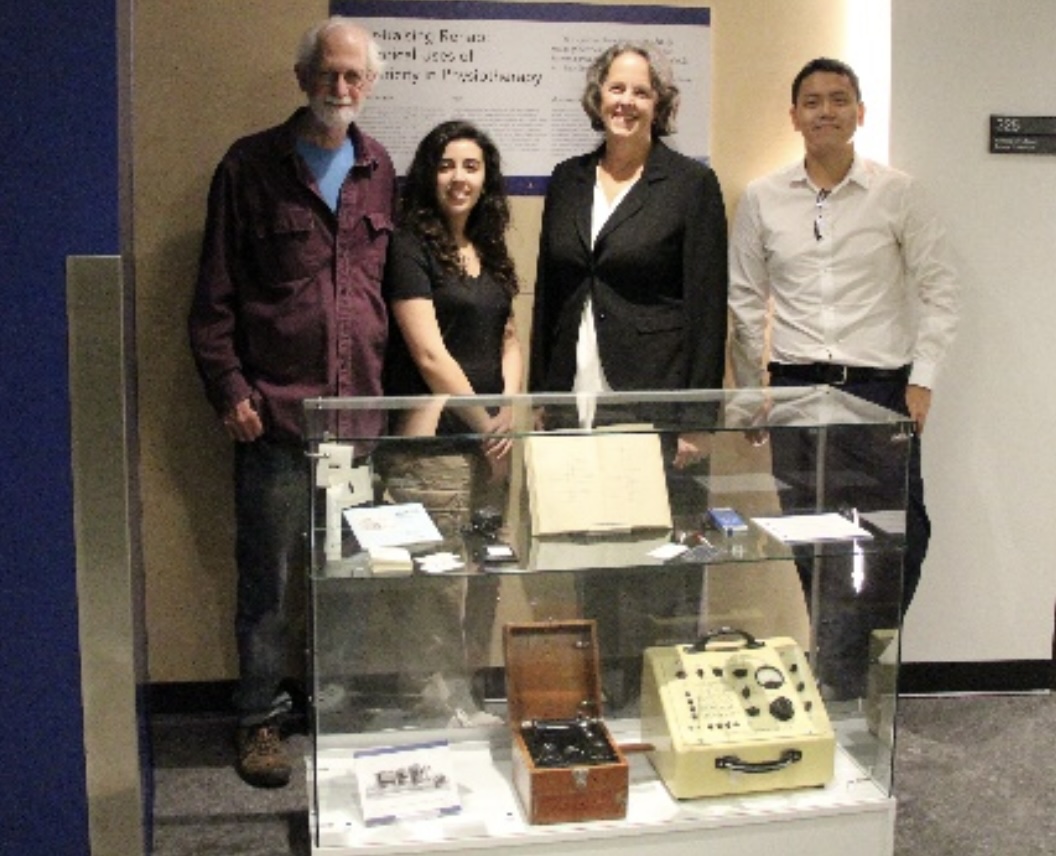Avid historians at McGill University, Canada have curated a display of intriguing physiotherapy equipment dating back to the Gaiffe Nerve Stimulator, c1860. Sarah Marshall PT Fellow, Faculty Lecturer, School of Physical & Occupational Therapy, and Rick Fraser, MDCM, Professor, Department of Pathology, Director of the Maude Abbott Medical Museum, and pathologist at the McGill University Health Centre together with two recent Physical Therapy graduates have set up the display case, on the 3rd floor of the McIntyre Medical Building.
The case contents were researched and collected by then-master’s students, Daniel Lee and Nadia Bichri, who worked on the project while finishing their studies in the summer of 2023. The display case is ready for all to view from now until next summer. Next time you pass by the “McMed” take a moment to look at the evolution of physiotherapy modalities and approaches over time. The following are texts created to describe the areas of electrotherapy, muscle stimulation and treatment of pain.
Electrotherapy
Electricity has long been associated with disease and its treatment. For example, in ancient Egypt it was believed that touching an electric eel could numb toothache or even labor pain! Work by scientists such as Luigi Galvani, who discovered in 1780 that the muscles of dead frogs’ legs twitched when stimulated by an electrical spark, provided the scientific basis for the modern use of electrical currents in devices such as cardiac pacemakers. A variety of electrical machines have been employed in physiotherapy for purposes such as muscle stimulation and relief of pain.
Muscle stimulation
Neuromuscular Electrical Stimulation (NMES) is used for several purposes, including muscle strengthening (“re-education”) following disuse atrophy and improving the range of motion around a joint. An external electrical source provides a current that stimulates muscle contraction. Depending on the underlying abnormality, short or long contractions are interspersed with rests of variable duration programmed by the therapist.
Pain
Transcutaneous nerve stimulation (TENS) is based on the Gate Control Theory developed in the 1960s by McGill researchers Ronald Melzack and Patrick Wall. They proposed that the sensation of pain is mediated by thin nerve fibers and can be lessened by touch or pressure sensations transmitted by thick nerve fibers. By providing an electrical stimulus via the skin similar to that of the thick fibers, TENS is hypothesized to “close the gate” on an existing pain sensation, resulting in its decrease or disappearance.


ivermectin malaria
ivermectin malaria
synthroid wiki
synthroid wiki
acarbose reviews
acarbose reviews
remeron headache
remeron headache
actos publicos.gov.ar
actos publicos.gov.ar
abilify dosages for depression
abilify dosages for depression
repaglinide and pregnancy
repaglinide and pregnancy
can you drink alcohol while taking augmentin
can you drink alcohol while taking augmentin
celexa weight gain
celexa weight gain
baclofen lioresal
baclofen lioresal
amitriptyline dosage for sleep reviews
amitriptyline dosage for sleep reviews
how long does aspirin stay in your system
how long does aspirin stay in your system
allopurinol dosing for gout
allopurinol dosing for gout
reddit contrave weight loss
reddit contrave weight loss
cozaar vs benicar
cozaar vs benicar
what is the difference between citalopram and escitaloprám
what is the difference between citalopram and escitaloprám
niacin or ezetimibe
niacin or ezetimibe
effexor weight loss
effexor weight loss
neurontin 400 mg overdose
neurontin 400 mg overdose
cephalexin killed my dog
cephalexin killed my dog
citron pharma duloxetine
citron pharma duloxetine
m zam azithromycin tablet uses
m zam azithromycin tablet uses
what type of drug is lexapro
what type of drug is lexapro
Good day, thank you for this article! Great to see other people passionate about electrotherapy, there is so much untapped healing potential in electrotherapy. I hope you have a Smart Coil and a Strong Box in your display;)